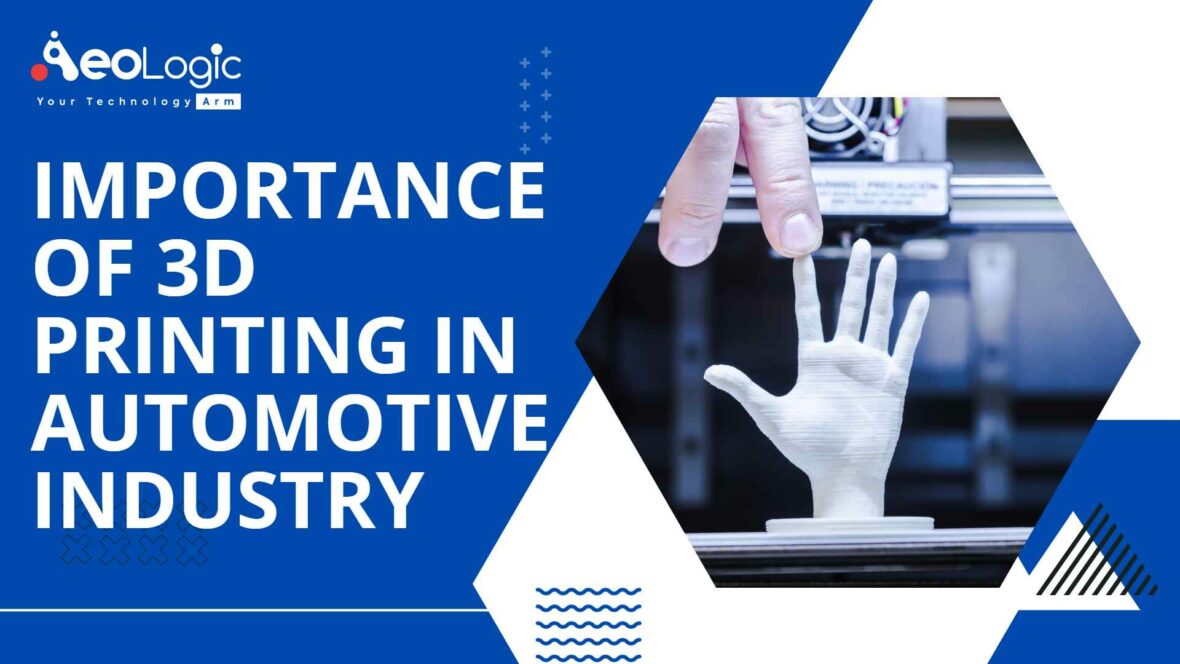The 3D printing technology is giving rise to spectacular achievements in the automotive industry. Initiating from the possibility of fast prototyping, with the help of a more and more widespread production of final car parts, and finishing with 3D manufacturing of nearly the whole cars. In this blog, we will be discussing the importance of 3D printing in automotive industry.
The Importance of 3D printers in Automotive Industry
The automotive industry has liked 3D printing and has been utilizing its opportunities on a daily basis more and more often. Engineers and Designers open to innovation are implementing bold ideas with the implementation of the technology. Thus, extending the pallet of engineering advantages and optimizing the manufacturing processes.
3D Printed End-Use Parts
The times when the major use of 3D printing technology in the automotive industry was quick prototyping have long gone now. The report of the SmartTech Publishing research company on the automotive sector indicates that 3D printing is more and more often applied in manufacturing the final car parts. The analysts project that by 2029 the 3D printing market in that narrow sector will be generating as much as USD 9 billion in revenue.
High-performance Materials in Producing Cars
The importance of 3D printing in automotive industry is one of the currently most popular and most frequently applied 3D printing technology in the automotive industry is FFF (Fused Filament Fabrication). Its advantage is to use several different materials, the properties of which are similar to plastics. With the implementation of a 3D printer the required parts and details may be made. Which not only is allowing companies for keeping production continuity, which is very imperative nowadays. However, also becoming independent of external suppliers and streamlining the production processes.
Benefits of Using 3D Printing in the Automotive Industry
Cost-Effective
Another importance of 3D printing in automotive industry is imitating small parts. Through additive manufacturing would be usually much more cost-effective as compared to having a large stock of parts. Simply a CAD file will be okay, replacing costly and long lead-time production.

Customization
For both owners and manufacturers, the limitless choices for customization with 3D printing offer opportunities for personalized, bespoke vehicles, spares, and parts.
Short Production Time
Manufacturing 3D printed parts can considerably reduce turnaround times in all stages of manufacturing. As it needs a lower consumption of materials and wastage, which is contributing to a shorter production time.
Innovative and Flexible
3D printing also offers manufacturers the opportunity to try multiple options and iterations during the different levels of development. This is implying that they can stay up to date with the industry requirements with added flexibility to make changes throughout the process.
Design Innovation
3D printing can be implemented to create complex, intricate designs that would not have been possible with traditional manufacturing methods. This potential is particularly advantageous when creating customised functional parts.
As weight mitigation is a key area of concern for automotive OEMs – lighter vehicles usually have lower fuel consumption. Design engineers can also take leverage from combining 3D printing with tools like generative design and topology optimization. These can be implemented to remove material in particular areas and create parts with optimized weight and performance.
Simplified Assembly
Part consolidation is another method in which automotive OEMs can provide an advantage from using the importance of 3D printing in automotive industry. Since conventional manufacturing methods are lacking the design freedom of 3D printing. Multiple components must often be produced to create a final component.
With this method, 3D printing can ease the assembly process by decreasing the number of components required at the assembly stage. Overcoming the demand for multiple parts facilitates reducing both material usage and assembly time or costs.
Customisation Of Automotive Parts
Automotive OEMs must, increasingly, find ways to create vehicles tailored to the needs of their customers, with manufacturing leaning ever further towards mass customization. 3D printing is offering a cost-effective and flexible method to produce customised parts.
Within the luxury and motorsports fraction of the industry, companies are already applying the technology for producing personalizing parts. For both the interior and exterior parts of a vehicle.
Providing customisation options to customers is one-way automakers aim to enhance customer experience and boost their competitive advantage.
Wrapping Up…
One area of the automotive industry that has known the importance of 3D printing in automotive industry for customisation, is that of luxury vehicles. In a segment where small production runs are the norm, 3D printing can be applied for creating parts. Customizing to particular customer requirements, in a relatively short time frame.
For more information about how we can help, contact our team of industry expert today.






